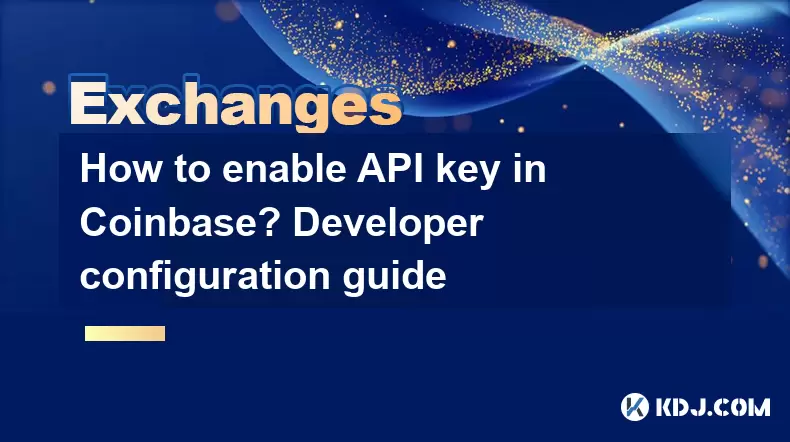-
 Bitcoin
Bitcoin $114200
0.00% -
 Ethereum
Ethereum $3637
0.56% -
 XRP
XRP $2.950
-2.01% -
 Tether USDt
Tether USDt $0.9999
0.02% -
 BNB
BNB $761.0
0.55% -
 Solana
Solana $164.1
-1.38% -
 USDC
USDC $0.9999
0.02% -
 TRON
TRON $0.3332
0.36% -
 Dogecoin
Dogecoin $0.2012
-0.52% -
 Cardano
Cardano $0.7261
-1.41% -
 Hyperliquid
Hyperliquid $37.62
-2.13% -
 Stellar
Stellar $0.3930
-2.65% -
 Sui
Sui $3.441
-0.16% -
 Bitcoin Cash
Bitcoin Cash $563.8
0.70% -
 Chainlink
Chainlink $16.50
0.09% -
 Hedera
Hedera $0.2424
-0.14% -
 Ethena USDe
Ethena USDe $1.001
0.01% -
 Avalanche
Avalanche $22.20
0.00% -
 Litecoin
Litecoin $118.0
-2.48% -
 UNUS SED LEO
UNUS SED LEO $8.991
0.12% -
 Toncoin
Toncoin $3.195
-3.87% -
 Shiba Inu
Shiba Inu $0.00001217
0.12% -
 Uniswap
Uniswap $9.674
-0.21% -
 Polkadot
Polkadot $3.633
1.00% -
 Monero
Monero $295.3
-0.82% -
 Dai
Dai $0.9999
0.00% -
 Bitget Token
Bitget Token $4.321
-0.41% -
 Cronos
Cronos $0.1392
0.73% -
 Pepe
Pepe $0.00001027
-0.89% -
 Aave
Aave $258.5
0.32%
How to enable API key in Coinbase? Developer configuration guide
To integrate Coinbase services, developers must enable an API key, configure it securely, and follow best practices to protect their applications from unauthorized access.
Jun 07, 2025 at 05:00 am

Enabling an API key in Coinbase is an essential step for developers looking to integrate Coinbase's services into their applications. This guide will walk you through the process of enabling your API key, configuring it for your development needs, and ensuring secure access to Coinbase's platform. Whether you're building a trading bot, a wallet application, or any other service that requires interaction with Coinbase, this configuration guide will provide you with the necessary steps.
Understanding Coinbase API Keys
Before diving into the configuration process, it's important to understand what an API key is and its role in accessing Coinbase services. An API key acts as a unique identifier that authenticates your application to interact with Coinbase's API. This key ensures that only authorized applications can access your account data and perform actions on your behalf.
To use Coinbase's API, you need to generate a key through their platform. This key will be used in your application's code to authenticate requests. It's crucial to keep your API key secure, as it grants access to your Coinbase account.
Generating Your API Key
To generate your API key, follow these steps:
- Log into your Coinbase account: Visit the Coinbase website and sign in with your credentials.
- Navigate to the API settings: Once logged in, go to the Settings section, then click on API.
- Create a new API key: Click on the New API Key button. You will be prompted to enter a name for your key, which should be descriptive enough to help you identify its purpose later.
- Set permissions: Choose the permissions you want to grant to this API key. Coinbase allows you to select specific permissions such as trading, wallet management, and transaction history access. Be cautious and only select the permissions necessary for your application.
- Confirm your identity: You may be required to confirm your identity via a two-factor authentication (2FA) method to proceed.
- Save the API key and secret: After confirming your identity, Coinbase will generate your API key and a secret key. Download and save these keys securely, as you will not be able to view the secret key again.
Configuring Your API Key for Development
Once you have generated your API key, you need to configure it in your development environment. Here's how to do that:
- Store the API key securely: Never hardcode your API key in your source code. Instead, use environment variables or a secure configuration management system to store your key.
- Set up authentication in your code: Use the API key and secret to authenticate your requests to Coinbase's API. Most programming languages have libraries that simplify this process. For example, in Python, you can use the
coinbaselibrary to handle authentication. - Test your API connection: Before deploying your application, test the API connection to ensure that your key is working correctly. You can do this by making a simple request to retrieve your account balance or transaction history.
Securing Your API Key
Security is paramount when dealing with API keys. Here are some best practices to secure your Coinbase API key:
- Use HTTPS: Always use HTTPS to communicate with Coinbase's API to prevent man-in-the-middle attacks.
- Implement rate limiting: Protect your API key from abuse by implementing rate limiting in your application.
- Monitor API usage: Regularly monitor your API usage to detect any unauthorized access or suspicious activity.
- Rotate your keys: Periodically rotate your API keys to minimize the risk of key compromise. You can do this by generating a new key and updating your application to use the new key.
Troubleshooting Common Issues
When working with Coinbase's API, you may encounter some common issues. Here's how to troubleshoot them:
- Invalid API key: If you receive an error message stating that your API key is invalid, double-check that you have entered the correct key in your application. Also, ensure that the key has not been revoked or expired.
- Permission errors: If you encounter permission errors, review the permissions you set for your API key. Make sure that you have granted the necessary permissions for the actions your application is trying to perform.
- Rate limit exceeded: If you exceed the rate limit, your application will be temporarily blocked from making requests. Implement rate limiting in your application to prevent this issue.
Integrating Your API Key into Your Application
Once your API key is configured and secured, you can start integrating it into your application. Here are some steps to follow:
- Initialize the Coinbase client: In your application code, initialize the Coinbase client using your API key and secret. This client will handle authentication and make requests to Coinbase's API.
- Make API requests: Use the client to make requests to Coinbase's API. You can retrieve account information, execute trades, and manage your wallet.
- Handle responses: Process the responses from Coinbase's API and integrate them into your application's logic. Be prepared to handle errors and exceptions gracefully.
Frequently Asked Questions
Q: Can I use the same API key for multiple applications?
A: It's not recommended to use the same API key for multiple applications. Each application should have its own API key with the necessary permissions to ensure security and better management of access.
Q: How often should I rotate my API key?
A: It's a good practice to rotate your API key every 30 to 90 days, depending on your security requirements. Regular rotation helps minimize the risk of key compromise.
Q: What should I do if my API key is compromised?
A: If you suspect that your API key has been compromised, immediately revoke the key from your Coinbase account and generate a new one. Update your application to use the new key and monitor your account for any suspicious activity.
Q: Are there any limitations on the number of API keys I can create?
A: Coinbase does not impose a strict limit on the number of API keys you can create, but it's recommended to keep the number of keys to a minimum for easier management and enhanced security.
Disclaimer:info@kdj.com
The information provided is not trading advice. kdj.com does not assume any responsibility for any investments made based on the information provided in this article. Cryptocurrencies are highly volatile and it is highly recommended that you invest with caution after thorough research!
If you believe that the content used on this website infringes your copyright, please contact us immediately (info@kdj.com) and we will delete it promptly.
- Ethereum, Transaction Volumes, and SEC Staking: Navigating the Regulatory Landscape
- 2025-08-06 22:30:13
- Crypto, Tokens, and Metrics: Navigating the New Frontier
- 2025-08-06 23:09:22
- Crypto Market Buzz: PROVE Surges as Coinbase, Binance List Token
- 2025-08-06 22:30:13
- BlockDAG, Crypto, and Binance Coin: The Hottest Trends You Can't Ignore
- 2025-08-06 23:50:13
- BlockSack Who? Base Network and Layer 2s Shake Up the Crypto Scene
- 2025-08-06 23:10:13
- DOGE, SHIB, and Remittix ROI: Shifting Sands in the Crypto Landscape
- 2025-08-06 23:50:13
Related knowledge

How to set and manage alerts on the Gemini app?
Aug 03,2025 at 11:00am
Understanding the Gemini App Alert SystemThe Gemini app offers users a powerful way to stay informed about their cryptocurrency holdings, price moveme...

How to use the Gemini mobile app to trade on the go?
Aug 04,2025 at 09:14am
Setting Up the Gemini Mobile AppTo begin trading on the go using the Gemini mobile app, the first step is installing the application on your smartphon...

How to set up a corporate account on Gemini?
Aug 05,2025 at 03:29pm
Understanding Gemini Corporate AccountsGemini is a regulated cryptocurrency exchange platform that supports both individual and corporate account crea...

How to change the email address associated with your Gemini account?
Aug 06,2025 at 08:49pm
Understanding the Importance of Updating Your Email on GeminiYour email address serves as a primary identifier and communication channel for your Gemi...

What to do if you forgot your Gemini password?
Aug 04,2025 at 03:42am
Understanding the Role of Passwords in Gemini AccountsWhen using Gemini, a regulated cryptocurrency exchange platform, your password serves as one of ...

What are the websocket feeds available from the Gemini API?
Aug 03,2025 at 07:43pm
Overview of Gemini WebSocket FeedsThe Gemini API provides real-time market data through its WebSocket feeds, enabling developers and traders to receiv...

How to set and manage alerts on the Gemini app?
Aug 03,2025 at 11:00am
Understanding the Gemini App Alert SystemThe Gemini app offers users a powerful way to stay informed about their cryptocurrency holdings, price moveme...

How to use the Gemini mobile app to trade on the go?
Aug 04,2025 at 09:14am
Setting Up the Gemini Mobile AppTo begin trading on the go using the Gemini mobile app, the first step is installing the application on your smartphon...

How to set up a corporate account on Gemini?
Aug 05,2025 at 03:29pm
Understanding Gemini Corporate AccountsGemini is a regulated cryptocurrency exchange platform that supports both individual and corporate account crea...

How to change the email address associated with your Gemini account?
Aug 06,2025 at 08:49pm
Understanding the Importance of Updating Your Email on GeminiYour email address serves as a primary identifier and communication channel for your Gemi...

What to do if you forgot your Gemini password?
Aug 04,2025 at 03:42am
Understanding the Role of Passwords in Gemini AccountsWhen using Gemini, a regulated cryptocurrency exchange platform, your password serves as one of ...

What are the websocket feeds available from the Gemini API?
Aug 03,2025 at 07:43pm
Overview of Gemini WebSocket FeedsThe Gemini API provides real-time market data through its WebSocket feeds, enabling developers and traders to receiv...
See all articles

























































































